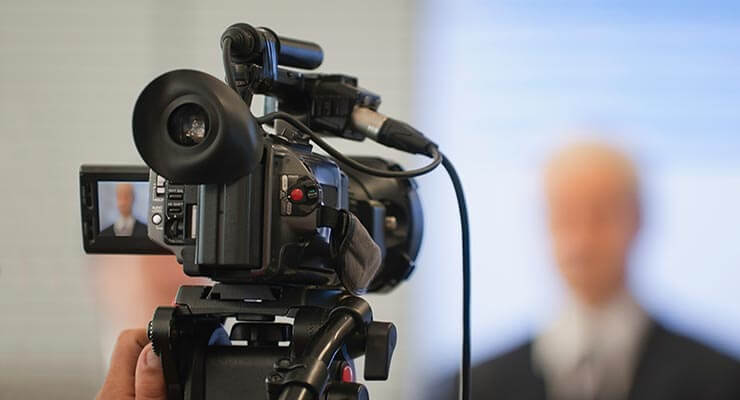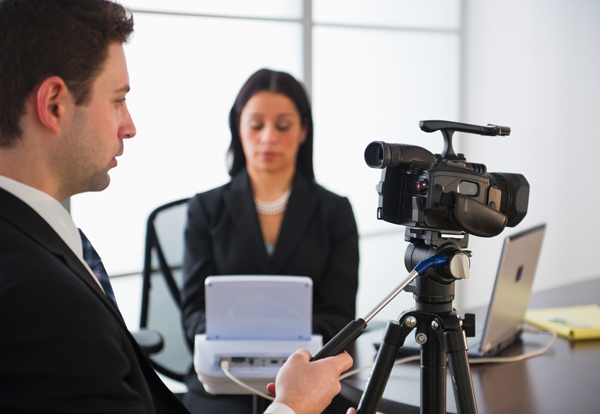Why Lawful Videography Is Crucial for Accurate Legal Record-Keeping
In the realm of legal procedures, the accuracy of record-keeping is extremely important, and lawful videography emerges as a crucial tool in this context. By recording the nuances of spoken and non-verbal interaction, it significantly decreases the potential for false impression that can come with traditional written records. The conservation of authentic visual evidence not only enhances the credibility of statements yet additionally contributes to a thorough account of occasions. As we discover the diverse advantages of legal videography, one have to consider its implications for the future of judicial stability and openness - legal videography.
Value of Visual Proof
Establishing the importance of aesthetic proof in legal process is vital for ensuring precise record-keeping and enhancing the overall stability of the judicial process. Aesthetic evidence offers as an important tool in documenting events, problems, and various other pertinent details that might be vital to a situation. Unlike composed accounts, which are susceptible to interpretation and bias, visual recordings provide a purpose, unalterable representation of facts as they occurred.


This form of evidence can capture a range of elements, including witness actions, environmental context, and physical evidence, every one of which may affect judicial outcomes. By providing a clear and extensive aesthetic narrative, lawful videography eliminates obscurity and aids to preserve the credibility of the evidence.
Moreover, visual proof can be crucial in decreasing disputes over accurate discrepancies, as it allows for a direct contrast versus testament and various other recorded records. In a period where electronic innovation is significantly prevalent, the capability to existing aesthetic evidence efficiently can substantially enhance the general top quality of legal proceedings. Inevitably, the incorporation of visual evidence not just bolsters the documents procedure but also enhances public rely on the judicial system by advertising openness and accountability.
Enhancing Statement Integrity
The combination of lawful videography right into court process considerably enhances the credibility of witness testament. By catching the subtleties of spoken and non-verbal communication, video recordings provide a more comprehensive depiction of a witness's attitude, feelings, and reliability. This visual paperwork permits jurors to observe the witness's body language, face expressions, and total manner, which are crucial elements that can influence their assumption of testimony credibility.
Additionally, legal videography reduces the potential for misinterpretation or distortion of testament that might occur in written transcripts. Viewers can see and hear the testimony as it existed, ensuring that the context and tone are preserved. This authenticity cultivates a greater feeling of count on amongst jurors, that may be much more likely to think testament that they can witness firsthand.
Furthermore, the visibility of video footage can prevent witnesses from giving misleading or exaggerated statements, as they understand that their testimony is being recorded. This accountability reinforces the integrity of the judicial process. Eventually, lawful videography functions as a crucial tool in guaranteeing that witness testimony is not just properly illustrated but additionally seen with enhanced credibility by all celebrations entailed.
Comprehensive Document Preservation
Comprehensive record conservation is important for keeping the honesty of legal process. Legal videography offers as a vital tool in this process, giving an exact aesthetic and auditory account of testimonies, depositions, and various other critical minutes in a situation. Unlike traditional written transcripts, video recordings record the nuances of body movement, tone, and feeling, which are vital for comprehending the context and intent behind statements made throughout lawful process.

Additionally, the capacity to evaluate video evidence enables legal specialists to recognize crucial information that might have been neglected in composed recommended you read records. By maintaining a detailed archive of lawful procedures via videography, law practice can support the highest criteria of precision and accountability, inevitably adding to a fairer judicial procedure.
Enhancing Legal Procedures
Enhancing legal procedures is important for improving efficiency and lowering delays within the judicial system. Legal videography works as a critical tool in attaining this goal by supplying clear and accurate aesthetic documents of court hearings, depositions, and testimonies. This technology permits real-time recording, making sure that all verbal and non-verbal cues are recorded, which can assist in quicker resolution of disputes.
The assimilation of videography into legal processes reduces reliance on standard approaches, such as lengthy transcripts, which can be taxing to produce and assess. By having accessibility to taped video, attorneys can promptly reference vital minutes, improving their capacity to prepare and existing cases properly. This immediacy also helps in the making clear of statements, minimizing the possibility for misinterpretation.
Furthermore, visual documentation cultivates a more appealing courtroom experience for jurors, assisting them to realize intricate info extra readily. Ultimately, legal videography improves interaction among all parties involved, from lawyers to judges to jurors, thereby advertising an extra reliable judicial process (legal videography). In an age where time is important, embracing this innovation is crucial for the modern legal landscape
Admissibility in Court
Accurate documents is important not just for performance however likewise for ensuring that evidence is admissible in court. Lawful videography serves as a vital tool in this process, providing a a knockout post reliable visual record of testaments, statements, and occasions. Courts frequently call for evidence to satisfy certain requirements of admissibility, consisting of relevance, authenticity, and integrity. High-grade video recordings can fulfill these criteria by recording clear sound and aesthetic information that composed transcripts might ignore.
To be considered permissible, legal videography needs to follow established procedures, such as proper equipment use, suitable lights, and clear audio capture. Furthermore, it is vital to have actually qualified videographers that understand the lawful requirements bordering evidence collection. The chain of custodianship should additionally be preserved to avoid any type of cases of tampering or modification.
Moreover, lawful videography can enhance the persuasiveness of evidence by supplying jurors with a straight sight of the testimony, allowing for an extra engaged understanding of the instance. In summary, the combination of lawful site here videography right into record-keeping not just sustains efficiency however additionally bolsters the stability and admissibility of evidence in court procedures.
Final Thought
In verdict, lawful videography plays a critical role in guaranteeing precise lawful record-keeping by providing objective aesthetic paperwork. Inevitably, the unification of legal videography into the judicial procedure advertises transparency and boosts public depend on in the stability of the legal system.